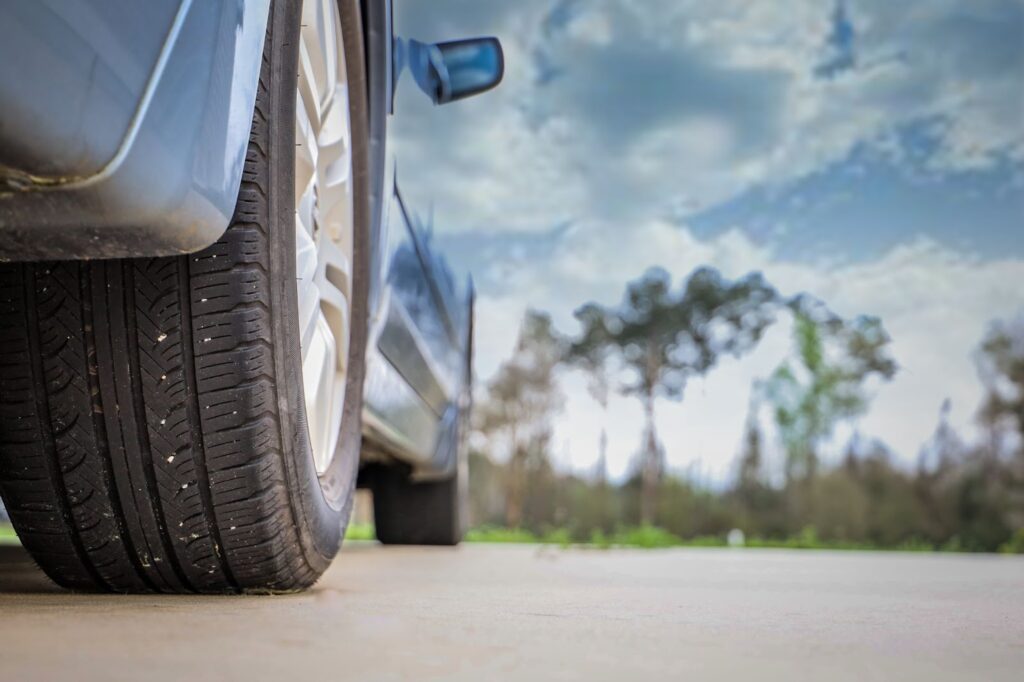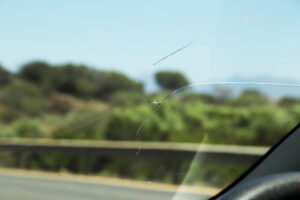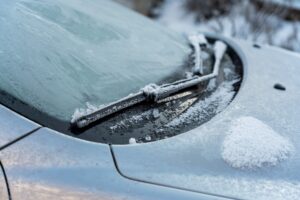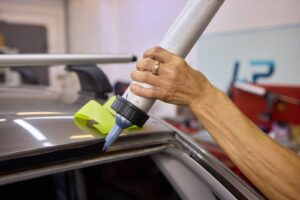Embarking on a road trip is more than charting a course to your next adventure. It’s about embracing the open road, the unexpected detours, and the freedom that comes with every mile.
However, the key to unlocking this freedom and ensuring your journey is filled with joy rather than roadside delays lies in one crucial step before you hit the road: comprehensive car maintenance. Consider this an essential part of your road trip checklist!
In today’s blog, we’ll guide you through every essential check and preparation your vehicle needs to ensure it’s as ready for the adventure as you are.
From under-the-hood inspections to your windshield, we’ve compiled the ultimate checklist to help you cruise through your journey with confidence and peace of mind. Let’s gear up for a road trip where the only surprises are the ones you want to experience!
Under the hood checks
1. Engine oil
Start by checking your engine oil level. Locate the dipstick (look for a bright-colored handle) and pull it out. Wipe it clean, put it back in, and then recheck the oil level. It should be between the minimum and maximum marks on the dipstick. If it’s low, add the recommended oil type for your car. Remember to use a funnel and avoid overfilling.
2. Coolant levels
Your car’s cooling system helps regulate engine temperature, preventing overheating. Check the coolant level by locating the coolant reservoir, typically a translucent plastic tank with level markings. Ensure the coolant is between the minimum and maximum marks. If it’s low, add a 50/50 mixture of coolant and water per your car’s specifications.
3. Brake fluid
Brake fluid is vital for safe and effective braking. Locate the brake fluid reservoir, usually on the driver’s side near the back of the engine compartment. Check the fluid level and ensure it falls within the indicated range on the reservoir. If necessary, add the brake fluid recommended for your car.
4. Power steering fluid
Power steering allows you to steer your car with ease. Find the power steering fluid reservoir, often near the engine or the bulkhead. Check the fluid level and ensure it’s within the recommended range. If it’s low, add the appropriate fluid type as stated in your car’s owner’s manual.
5. Transmission fluid
If your car has an automatic transmission, it’s important to check the transmission fluid. Without proper fluid levels, your transmission could suffer damage.
Locate the transmission dipstick, usually near the back of the engine compartment. Follow the same steps you did to check the engine oil to ensure the fluid is at the correct level. And remember that some cars require the engine to run while checking the transmission fluid.
6. Battery
A dead battery quickly puts a halt to your road trip plans. Inspect your battery for any signs of corrosion or loose connections. If you notice corrosion on the terminals, clean it with baking soda, water, and a wire brush.
Additionally, make sure the connections are tight and secure. If your battery is older and there are concerns about its reliability, it may be wise to have it checked by a professional before embarking on your journey. This essential part of your road trip checklist will ensure you’re ready for your trip.
7. Belts and hoses
Your car’s belts and hoses play a critical role in the proper functioning of its various systems. Inspect them for any signs of cracks, fraying, or excessive wear. Soft spots or bulges on hoses indicate that they need to be replaced.
8. Air filter
Adequate air supply is essential for your car’s engine performance. Locate the air filter housing, usually along the engine sidewall. Remove the air filter and check its cleanliness. If it’s clogged with dirt and debris, replace it with a new one. A clean air filter will help improve fuel efficiency and overall engine performance.

Tire maintenance
1. Tire pressure
Properly inflated tires provide a comfortable ride and improve fuel efficiency. You’ll find the manufacturer’s recommended tire pressure in your car’s manual or a sticker inside the driver’s door. Use a tire pressure gauge to measure the pressure and fill the tires accordingly. Remember also to check the spare tire!
2. Tire tread depth
The tread on your tires is critical in maintaining traction on the road. Insufficient tread depth leads to slippery conditions and reduced control over your vehicle. Check the tread depth using the penny test. Simply insert a penny into the tire grooves with Lincoln’s head facing downwards. If you see the top of Lincoln’s head, it’s time to think about replacing your tires.
3. Tire rotation
Regularly rotating your tires is necessary to promote even wear. Front tires tend to wear out faster due to steering and braking forces. By swapping them with the rear tires, you’ll extend their lifespan. Refer to your car’s manual to determine the frequency of tire rotations. If you’re unsure, a general guideline is to rotate the tires every 5,000-7,000 miles.
4. Wheel alignment
Proper wheel alignment ensures your tires make even contact with the road. Misaligned wheels will cause irregular tire wear and affect the handling of your vehicle. Look for signs of misalignment, such as the car pulling to one side or uneven wear on the tires. If you notice any of these issues, visit a professional mechanic to get your wheels aligned before your road trip.
5. Tire balancing
Uneven weight distribution on your tires can cause vibrations and an uncomfortable ride. Tire balancing helps distribute the weight evenly, preventing premature wear. If you notice excessive vibrations, especially at high speeds, it might be time to have a professional balance your tires.
6. Tire inspection
Before embarking on your road trip, it’s essential to inspect your tires thoroughly. Check for any signs of damage, such as cuts, bulges, or nails stuck in the tread. These issues can lead to sudden blowouts or leaks. In case of severe damage, replacing the tire is better than risking a breakdown during your trip.
Battery and electrical systems
1. Visual inspection
Begin by visually inspecting the battery for signs of corrosion, such as white or greenish deposits on the terminals. If you notice build-up, it’s essential to clean the terminals using a battery brush and a mixture of baking soda and water.
2. Battery age
Check the age of your battery. Most car batteries have a lifespan of around three to five years, and if your battery is approaching this mark, it may be time for a replacement. Consider replacing older batteries, especially for long trips, to minimize the risk of a sudden breakdown.
3. Voltage test
Perform a voltage test on your battery using an inexpensive multimeter. If the battery voltage is below 12.4 volts, it may have a lower charge and might struggle to start the car reliably. In such cases, recharging the battery or seeking professional help is advisable.
4. Check battery fluid
Carefully inspect the fluid level in each cell for batteries with removable caps. If necessary, top-up with distilled water, ensuring it’s at the recommended level indicated by the battery manufacturer.

Brakes, belts, and hoses
1. Brake pad thickness
Check the thickness of your brake pads. They should have enough material remaining to provide adequate stopping power. If they appear excessively worn, have a certified mechanic replace them.
2. Brake fluid
Inspect the brake fluid level. Locate the brake fluid reservoir under the hood and fill it to the recommended level. If the fluid appears dark or has contaminants, consider having it flushed and replaced.
3. Brake lines
Physically inspect the brake lines for any signs of leaks, cracks, or corrosion. Damaged brake lines will compromise the brake system’s performance and require immediate attention. Seek professional help if you notice any issues.
Belts
1. Serpentine belt
Locate the serpentine belt under the hood and visually inspect it for any signs of wear, fraying, or cracking. If you notice any damage, have it replaced promptly. A broken serpentine belt could cause significant engine problems.
2. Timing belt
If your vehicle has a timing belt (some have timing chains), ensure it is in good condition. Refer to your owner’s manual or consult a mechanic to determine your vehicle’s recommended replacement interval.
Hoses
1. Coolant hoses
Look for bulges, cracks, leaks, or soft spots in the hoses connected to the cooling system. Ensure they are securely attached. Any questionable hoses should be replaced to prevent potential overheating issues.
2. Radiator cap
Examine the radiator cap for signs of wear, cracks, or corrosion. A damaged cap can lead to coolant loss or system malfunctions. Replace it if necessary.
3. Power steering and brake hoses
Inspect the power steering and brake hoses for any signs of leaks, cracks, or bulging. These hoses are vital for the proper functioning of your vehicle’s key systems. A qualified mechanic should address any abnormalities.
Get road trip ready with Utah Mobile Auto Glass
Before you embark on your next grand adventure, make sure your view of the open road is crystal clear with our road trip checklist! For all your windshield care needs, from minor chips to full replacements, Utah Mobile Auto Glass has got you covered.
Don’t let a compromised windshield dampen your road trip spirit. Visit us for top-notch service and ensure your journey offers the unobstructed beauty of the road ahead. Gear up for your road trip with the best in windshield care — because every great journey deserves a clear beginning. Head to Utah Mobile Auto Glass today and embark on your adventure with confidence!
toto slot








